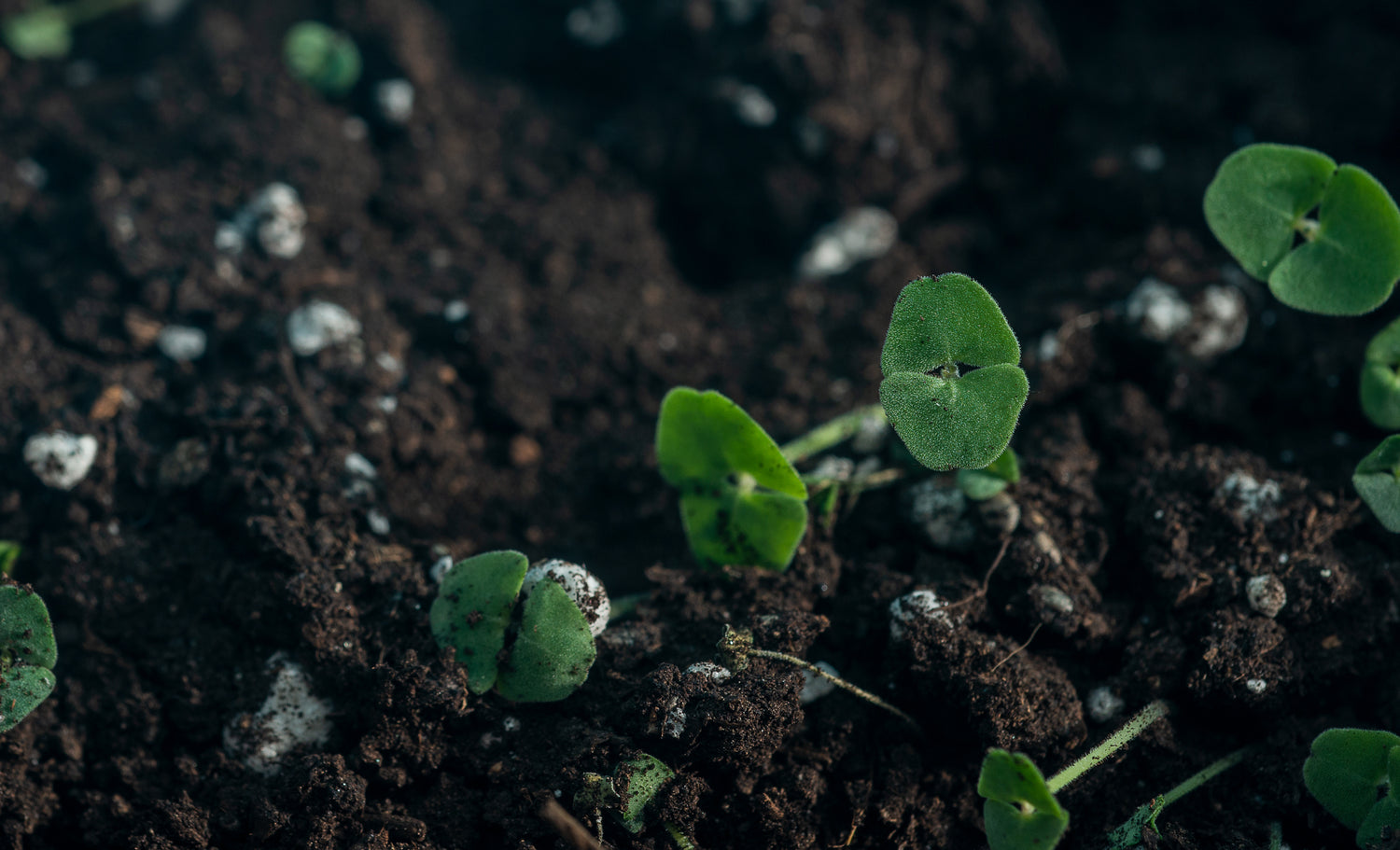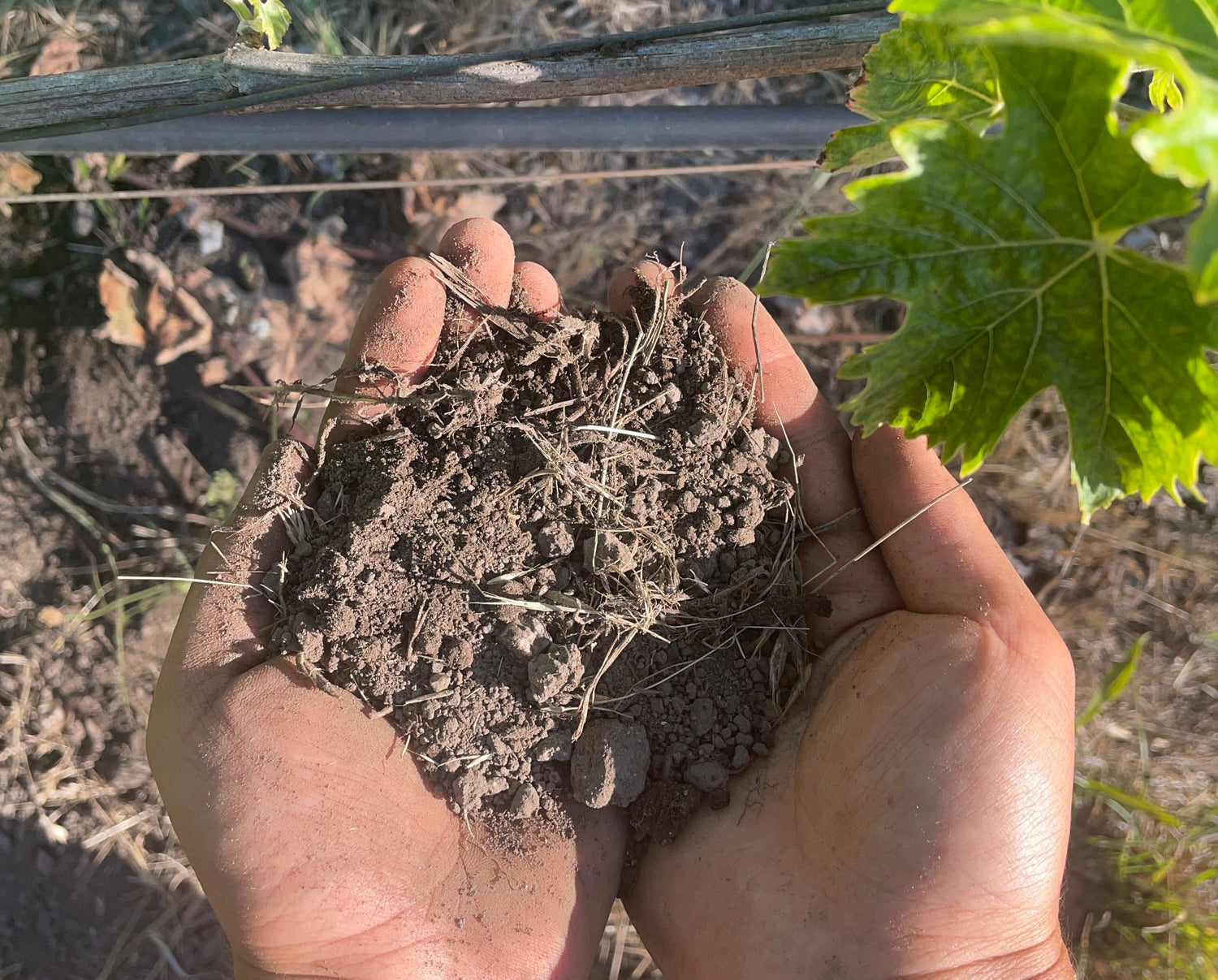Irrigation water quality directly impacts crop yields, soil health, and long-term agricultural sustainability, with poor water quality reducing global crop production by 10-20% annually according to recent research. Understanding and managing key parameters like salinity, pH, and contaminant levels is essential for maintaining productive growing systems.
Irrigation Water Quality: 2025 Guide to Testing, Management & Soil Health
Poor irrigation water quality reduces global crop yields by 10-20% annually, making water testing and management critical for sustainable agriculture and gardening success.
Irrigation water serves as the foundation for plant growth, nutrient transport, and soil ecosystem health. However, contaminated or chemically imbalanced water can severely damage crops, degrade soil structure, and reduce long-term productivity. This comprehensive guide examines the essential parameters of irrigation water quality, identifies common contamination sources, and provides research-backed strategies for effective water management in 2025.
Why Irrigation Water Quality Matters for Plant and Soil Health
Water quality directly influences plant physiology through photosynthesis, nutrient uptake, and cellular function. When irrigation water contains excessive salts, toxic ions, or pH imbalances, plants experience reduced growth, nutrient deficiencies, and increased susceptibility to disease.
Research published in Agricultural Water Management demonstrates that suboptimal water quality creates cascading effects throughout growing systems, including osmotic stress from high salinity, nutrient lockout from pH extremes, and soil structure degradation from sodium accumulation. A parallel study in Soil Use and Management found that prolonged use of poor-quality water decreases soil productivity by 15% over time.
The most significant impacts include direct plant toxicity from concentrated salts or heavy metals, disrupted nutrient balance affecting essential element uptake, and progressive soil degradation that reduces water retention and fertility. These effects compound over seasons, making early detection and management crucial for maintaining productive growing systems.
Critical Parameters for Water Quality Assessment
Effective irrigation water management requires monitoring specific chemical and physical parameters that directly impact plant health and soil condition. Understanding these key indicators enables growers to make informed decisions about water treatment, crop selection, and soil management practices.
Salinity and Electrical Conductivity
Salinity represents the total concentration of dissolved salts in water, measured as electrical conductivity (EC) in deciSiemens per meter (dS/m). High salinity creates osmotic stress that prevents plants from absorbing water effectively, even when soil moisture appears adequate.
Research in the Journal of Plant Nutrition found that salinity levels above 2.0 dS/m reduce yields in salt-sensitive crops like lettuce by 30%. The ideal EC range for most agricultural crops falls between 0.5-1.0 dS/m, with levels above 1.5 dS/m considered problematic for sensitive species. Salt-tolerant crops like barley can withstand EC levels up to 3.0 dS/m while maintaining acceptable yields.
Beyond direct plant effects, elevated salinity contributes to soil crusting, reduced water infiltration, and long-term fertility decline. Regular EC monitoring allows growers to adjust irrigation practices, select appropriate crops, and implement leaching schedules to prevent salt accumulation.
pH Levels and Nutrient Availability
Water pH affects both immediate nutrient availability and long-term soil chemistry. Most plants perform optimally with irrigation water pH between 6.0-7.5, where essential nutrients remain readily available for root uptake.
Soil Biology and Biochemistry research demonstrates that water pH below 5.5 or above 8.0 creates nutrient lockout conditions, particularly affecting iron, phosphorus, and micronutrient availability. Extreme pH also disrupts beneficial soil microorganisms, reducing biological activity that supports plant health.
pH extremes cause additional problems including reduced soil structure stability, decreased water retention capacity, and altered chemical reactions that affect fertilizer effectiveness. Regular pH testing enables timely adjustments through acid or lime additions to maintain optimal growing conditions.
Water Hardness and Mineral Content
Water hardness, primarily from calcium and magnesium ions, affects both plant nutrition and irrigation system function. While moderate hardness provides beneficial nutrients, excessive levels above 200 mg/L create operational challenges and nutrient imbalances.
Irrigation Science research shows that hard water forms mineral scale deposits in irrigation systems, reducing water flow efficiency by 20% and increasing maintenance requirements. Additionally, high calcium and magnesium levels can interfere with potassium and phosphorus uptake, creating secondary nutrient deficiencies.
However, moderate hardness levels between 100-200 mg/L provide supplemental calcium and magnesium nutrition, potentially reducing fertilizer requirements. Understanding hardness levels helps growers balance nutritional benefits with operational considerations.
Alkalinity and Buffering Capacity
Alkalinity measures water's capacity to neutralize acids, primarily from bicarbonate and carbonate ions. High alkalinity above 150 mg/L can gradually raise soil pH, creating long-term nutrient availability problems.
Geoderma research indicates that high alkalinity water increases soil buffering capacity, making pH adjustments more difficult and expensive. This effect particularly impacts micronutrient availability, as alkaline conditions promote iron, zinc, and manganese deficiencies.
Alkalinity differs from pH in that it represents the water's resistance to pH change rather than current acidity level. Waters with high alkalinity require more acid additions to achieve pH adjustments, increasing treatment costs and complexity.
Sodium Adsorption Ratio (SAR)
SAR compares sodium levels to calcium and magnesium concentrations, indicating the potential for soil structure degradation. This measurement proves more predictive of soil problems than simple sodium concentration alone.
Research in the Soil Science Society of America Journal demonstrates that SAR values above 9 cause soil clay particles to disperse, reducing soil permeability by 25% and creating waterlogged conditions. High SAR also disrupts nutrient exchange processes, particularly affecting potassium availability.
SAR calculations help predict long-term soil health impacts, enabling preventive management through gypsum applications, improved drainage, or water treatment before problems become severe. Regular SAR monitoring proves especially important in arid regions where salt accumulation occurs rapidly.
Toxic Ion Concentrations
Certain ions become toxic to plants at relatively low concentrations, requiring careful monitoring even in otherwise acceptable water sources. Chloride, boron, and heavy metals represent the most common toxic elements in irrigation water.
Plant and Soil research shows that chloride levels above 100 mg/L cause leaf burn and reduced growth in sensitive crops like citrus and stone fruits. Boron toxicity occurs above 1.0 mg/L, particularly affecting legumes and fruit trees with characteristic leaf scorching symptoms.
Heavy metals including cadmium, lead, and mercury pose human health risks even at trace concentrations. Journal of Environmental Quality studies demonstrate that these elements accumulate in plant tissues over time, potentially creating food safety concerns and long-term soil contamination.
Common Sources of Water Contamination
Understanding contamination sources enables targeted prevention and treatment strategies. Irrigation water contamination occurs through natural geological processes, agricultural activities, and industrial or urban sources, each requiring different management approaches.
Natural sources contribute approximately 30% of groundwater salinity through rock weathering and mineral dissolution. Hydrology and Earth System Sciences research indicates that geological formations naturally release salts, minerals, and trace elements into groundwater systems over time.
Agricultural practices significantly impact water quality through fertilizer runoff, pesticide residues, and livestock waste. Environmental Management studies show that agricultural areas contribute 20-30 kg of nitrogen and phosphorus per hectare annually to nearby water sources, while also introducing organic contaminants from pesticide applications.
Industrial and urban activities add heavy metals, chemical pollutants, and organic contaminants to water supplies. Water Resources Research indicates that urban runoff contributes 5-10 kg of pollutants per hectare to receiving waters, including road salt, petroleum products, and industrial chemicals.
Water Quality Testing and Interpretation
Regular water testing provides the foundation for effective irrigation management. Comprehensive testing should include electrical conductivity for salinity assessment, pH measurement for acidity evaluation, and specific ion analysis for toxic elements.
Total dissolved solids (TDS) testing provides an alternative salinity measure, with levels above 1000 mg/L indicating high salinity risk. However, EC measurements prove more reliable for agricultural applications because they directly relate to osmotic effects on plants.
Journal of Irrigation and Drainage Engineering research recommends EC levels below 0.7 dS/m for salt-sensitive crops and SAR values below 3 for maintaining soil structure. These thresholds vary by crop type, soil conditions, and climate factors, requiring site-specific interpretation.
Testing frequency depends on water source stability, with well water requiring annual testing and surface water needing seasonal or monthly analysis. Rapid field testing kits provide immediate results for pH and EC, while laboratory analysis proves necessary for comprehensive ion profiles and toxic element detection.
Water Treatment and Management Strategies
Effective water quality management combines source protection, treatment technologies, and adaptive irrigation practices. The most appropriate strategy depends on specific water quality problems, economic constraints, and crop requirements.
Source Protection and Selection
Protecting water sources from contamination represents the most cost-effective management approach. Journal of Cleaner Production research shows that buffer zones around surface water sources reduce contamination runoff by 20%, while proper well construction prevents direct contamination infiltration.
Source selection should consider long-term sustainability alongside immediate quality. Groundwater sources typically provide more consistent quality but may contain higher mineral concentrations, while surface water offers better quality but greater variability and contamination risk.
Physical and Chemical Treatment
Water treatment technologies range from simple filtration to complex desalination systems. Filtration removes particulates and pathogens while improving water clarity by 90%, making it suitable for most biological contaminants.
Reverse osmosis provides comprehensive treatment, removing 95% of dissolved salts and ions according to Desalination research. However, high energy requirements and operational costs limit its application to high-value crops or severely contaminated water sources.
Chemical treatments offer targeted solutions for specific problems. Gypsum additions reduce sodium levels while improving soil structure, and acid injection systems adjust pH for alkaline water sources. These treatments prove more economical than reverse osmosis for addressing single-parameter problems.
Soil Management Integration
Soil management practices can mitigate water quality effects through improved drainage, salt leaching, and organic matter additions. Strategic leaching with 20% excess water application reduces soil salinity by 30% according to Soil Science Society of America Journal research.
Gypsum applications improve soil structure and reduce sodium effects, increasing soil permeability by 15%. Organic matter additions through compost enhance nutrient retention by 10-12% while improving soil buffering capacity against pH fluctuations.
Cover crops and crop rotation provide biological approaches to soil health maintenance. These practices improve soil structure, enhance nutrient cycling, and reduce dependency on external inputs for soil management.
Crop Selection and Irrigation Practices
Matching crops to water quality conditions optimizes production while minimizing treatment costs. Salt-tolerant crops like barley, spinach, and certain forage species maintain acceptable yields at EC levels up to 3.0 dS/m according to Agronomy Journal research.
Irrigation scheduling and method selection significantly impact salt accumulation and plant stress. Drip irrigation reduces soil salinity by 20% compared to overhead sprinkler systems by minimizing evaporation and concentrating water application at root zones.
Mulching strategies reduce evaporation by 15% according to Agricultural Water Management research, helping maintain soil moisture while preventing salt concentration at the surface. Organic mulches provide additional benefits through gradual nutrient release and soil structure improvement.
Successful Water Quality Management Examples
California's Central Valley demonstrates effective high-salinity water management through integrated approaches. Facing irrigation water with EC levels of 2.5 dS/m, growers implemented reverse osmosis treatment combined with salt-tolerant alfalfa production, maintaining yields at 90% of optimal levels according to Irrigation Science research.
India's Punjab region addressed heavy metal contamination exceeding 0.1 mg/L lead through community filtration systems and phytoremediation using mustard plants. This integrated approach reduced soil contaminant levels by 25% over three growing seasons according to Journal of Environmental Quality studies.
These examples demonstrate that successful water quality management requires combining multiple strategies rather than relying on single solutions. Economic analysis, crop selection, and long-term sustainability must all factor into management decisions.
Building Sustainable Water Management Systems
Sustainable irrigation water management integrates quality monitoring, treatment technologies, and adaptive practices to maintain long-term productivity. Success requires understanding the relationships between water quality parameters, soil health, and crop performance.
Regular testing provides the foundation for informed decision-making, while treatment technologies offer solutions for specific quality problems. Soil management practices and crop selection provide additional tools for optimizing production under varying water quality conditions.
The 2024 research cited throughout this guide demonstrates that effective water quality management requires comprehensive approaches combining source protection, targeted treatment, and adaptive agricultural practices. As climate change and population growth increase pressure on water resources, these strategies become increasingly important for maintaining productive and sustainable agricultural systems.
Sources
- USDA Natural Resources Conservation Service. Irrigation Water Quality Standards. https://www.nrcs.usda.gov/resources/guides-and-instructions/irrigation-water-quality
- EPA Office of Water. Agricultural Water Quality Criteria. https://www.epa.gov/wqc/national-recommended-water-quality-criteria-aquatic-life-criteria-table
- University of California Agriculture and Natural Resources. Irrigation Water Quality Guidelines. https://ucanr.edu/sites/Salinity/Irrigation_water_quality/
- Cornell University Cooperative Extension. Water Quality for Crop Production. https://www.css.cornell.edu/faculty/lehmann/research/terra-preta/TerraPretaOverview.html
- USDA Agricultural Research Service. Soil and Water Quality Research. https://www.ars.usda.gov/research/programs/programs.htm?np_code=211
- National Institute of Food and Agriculture. Water Quality Program. https://www.nifa.usda.gov/grants/programs/water-programs
- Rodale Institute. Regenerative Agriculture Water Management. https://rodaleinstitute.org/why-organic/organic-basics/water-quality/
- USGS Water Resources. Irrigation Water Quality Assessment. https://www.usgs.gov/mission-areas/water-resources/science/irrigation-water-quality












